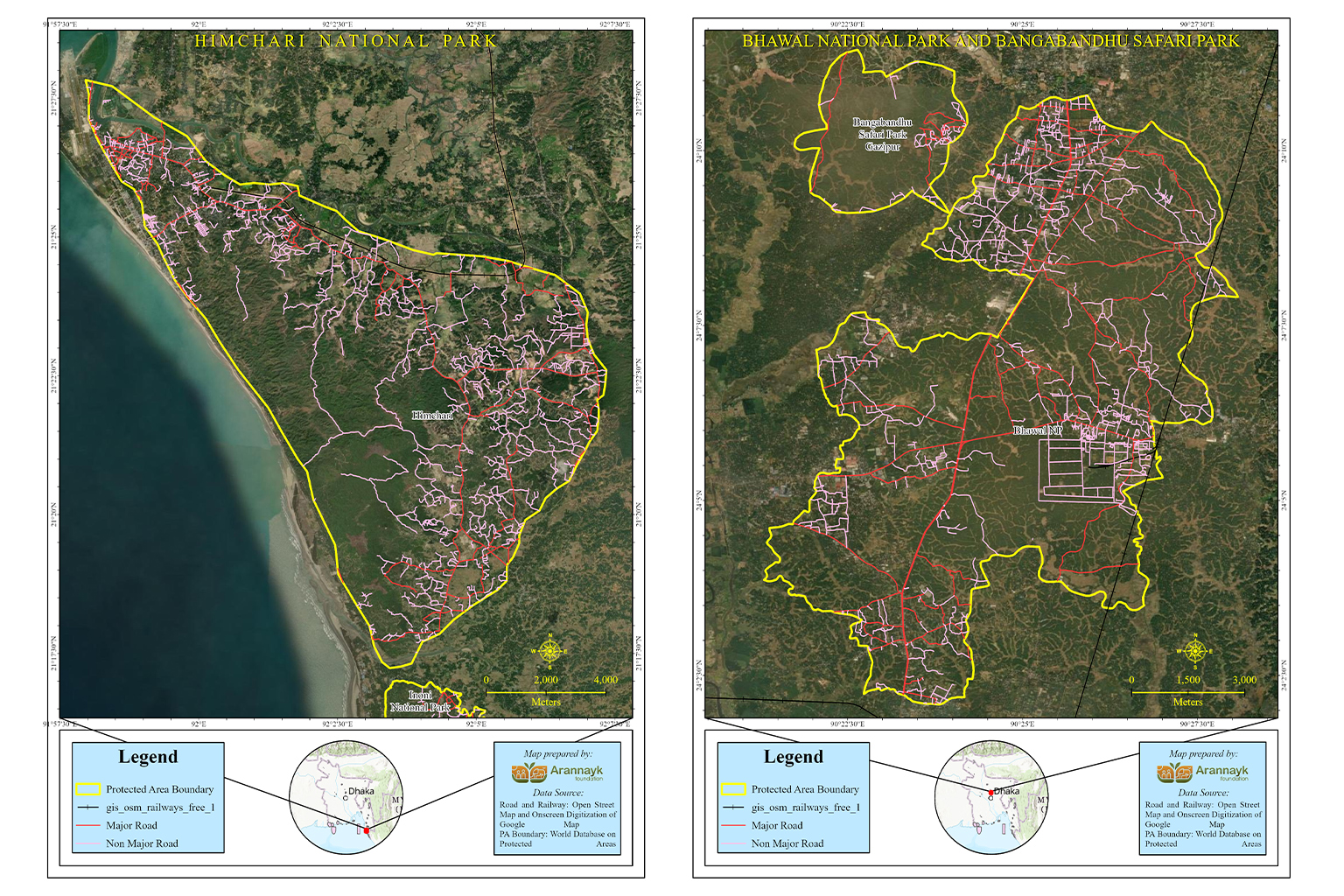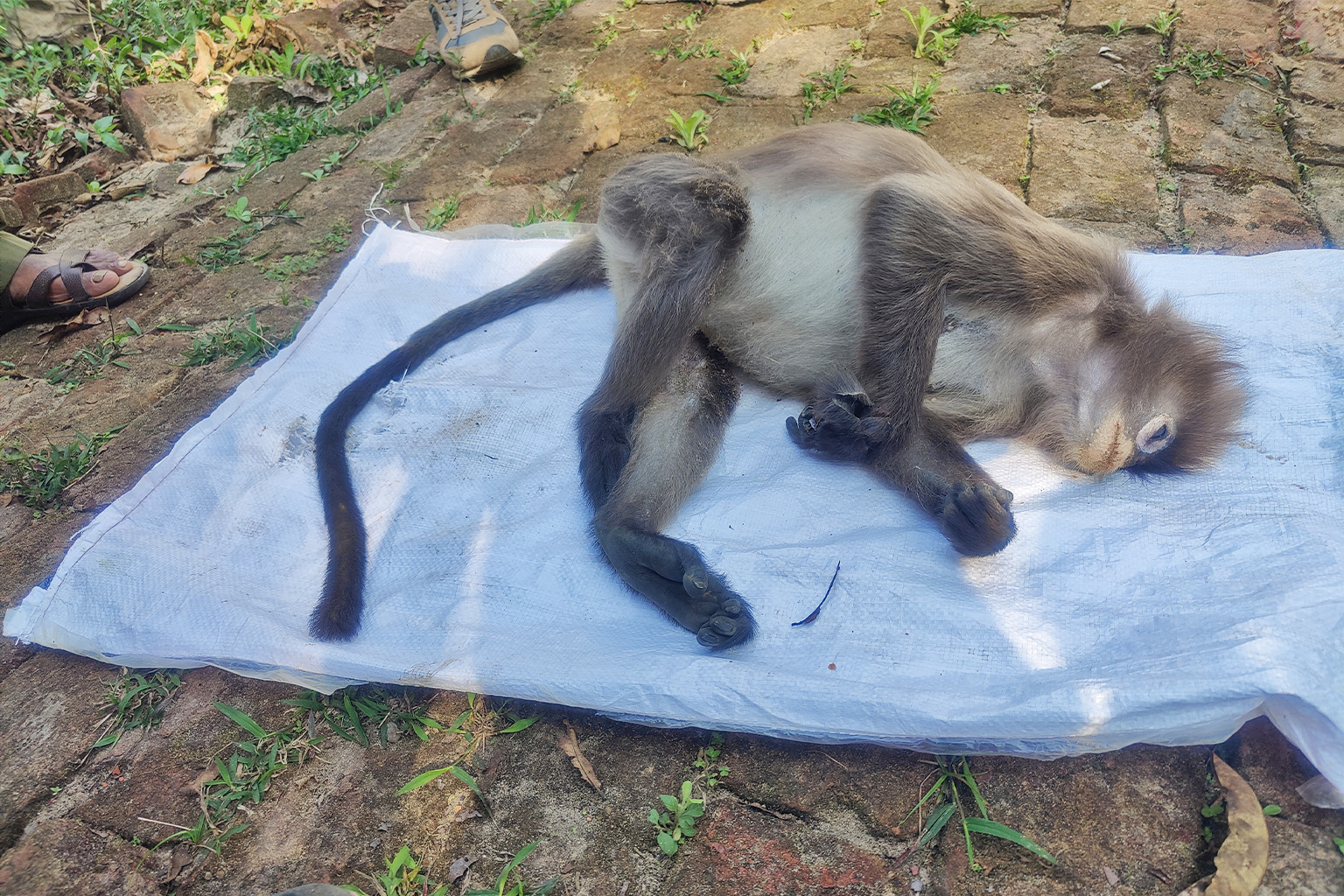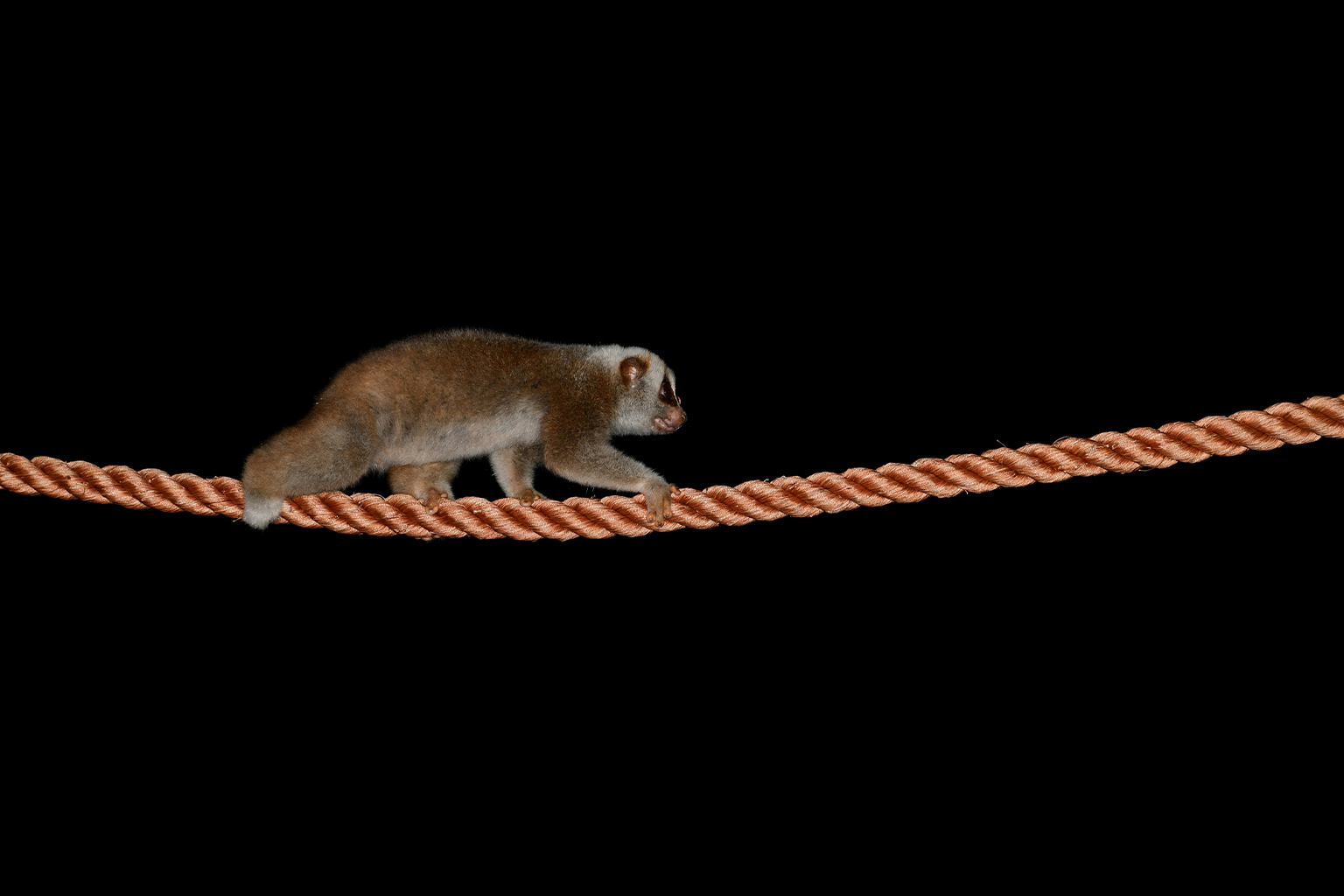- Mongabay has identified 1,618 kilometers (1,005 miles) of roads in 38 restricted forests in Bangladesh using remote sensing data, with many of these routes passing through important national parks and wildlife sanctuaries.
- Unlike in neighboring India, where the formal guidelines ensure the environment ministry has a say in infrastructure projects running through forested areas, Bangladesh lacks such provisions, allowing for the proliferation of roads, railways and power lines.
- In addition to killing animals, this linear infrastructure also encouraged illegal logging, mining, hunting and poaching, the introduction of exotic species, pollution, and illegal settlements.
- Experts say it should be “common sense” to account for the needs of wildlife when planning infrastructure, and recent projects are starting to incorporate canopy bridges and over- and underpasses to accommodate animal movement.
READER ADVISORY: This story contains images of dead wildlife that some viewers may find disturbing.
Two Asian elephants trundle along the rail tracks. From the window of the train, Phileas Fogg looks on. As the train speeds up, so do the elephants. The train passes through the forest, almost brushing by the elephants, and Fogg smiles.
That’s how director Michael Anderson dramatized a scene set in a tropical forest in South Asia in the 1956 Oscar-winning movie adaptation of the Jules Verne novel Around the World in 80 Days. This particular scene was shot in the Lawachara forest in what was then known as East Pakistan, and is today the northeast of Bangladesh. And while the forest remains timeless on the silver screen, the actual Lawachara has long since lost much of its wildlife: No Asian elephants have been seen there since the 1970s, according to biologists working in the region.
Bangladesh’s economic growth has been fueled by, and in turn fueled, the construction of new highways, railways and power lines all across the country. Lawachara now has a power line and trunk roads, in addition to railway tracks, known collectively as linear infrastructure. Every year, countless animals are killed trying to cross these barriers of asphalt, steel and high-voltage electricity. And it’s not just the risk of being run over or electrocuted. Linear infrastructure carves up natural habitat, fragmenting it into ever-smaller spaces that then prevent wildlife from moving around to feed, find mates, or migrate.
As more forests in Bangladesh become fragmented as a result of unplanned construction, lack of awareness, insufficient legal protection, and lack of appropriate guidelines for setting up linear infrastructure, the threats to wildlife continue to intensify.

Roads, railways and power lines
Using remote sensing data with the help of the Arannayk Foundation, Mongabay has identified 1,618 kilometers (1,005 miles) of roads in 38 restricted forests in Bangladesh, including major motorways as wide as 15 meters (49 feet).
These roads pass through important national parks and wildlife sanctuaries, including Bhawal, Himchari, Madhupur, Kaptai and Fasiakhali national parks; Pablakhali, Teknaf, Chunati and Satchari wildlife sanctuaries; and Bangabandhu Safari Park, among others.
The data also revealed 40 km (25 mi) of railroads in six restricted areas: Lawachara, Bhawal, Himchari and Medhakachhapia national parks, and Fasiakhali and Chunati wildlife sanctuaries.

In Lawachara, the threat that all this infrastructure poses to the native wildlife is very real. In a 2019 study, biologist couple Marzan Maria and Hasan Al-Razi looked at deaths of tree-dwelling animals as reported in local media between 2015 and 2017. They found 15 primates had died while trying to cross the Sreemangal-Bhanugach highway and the Dhaka-Sylhet railway line, which passes through the Lawachara forest. An electricity line also runs parallel to the highway.
They also recorded 14 animal deaths in Satchari National Park, which is split in half by a road from Dhaka to Sylhet and a power line.
“We gathered data from newspapers,” Al-Razi said, “but the actual number of cases could be much higher.”
In a 2013 study, biologist Shahriar Rahman and colleagues carried out a similar survey between 2011 and 2012 along a 7-km (4-mi) road that cuts through Lawachara National Park and found 503 snakes had been killed in road accidents during that period.

‘Forests harmed by expansion of civilization’
As Earth’s land and seascapes become more fragmented, ecosystem functions and biodiversity integrity become impaired, according to a 2015 study. Wildlife has less space to roam, river flows are disrupted, protected and conserved areas increasingly turn into islets, and ecological processes crucial to human well-being, like pollination, are in danger, according to the U.N. Environment Programme’s “Protected Planet Report 2018.”
In 2020, USAID launched the Linear Infrastructure Safeguards in Asia (LISA) Project to find out how Asian countries can continue building roads, railways and power lines without hurting wildlife. The project researchers from seven countries found that linear infrastructure also encourages illegal logging, extractive activities like mining, an increase in hunting and poaching, the introduction of exotic species, light, noise, air and runoff pollution from cars and trains, an increase in greenhouse gas emissions from cutting down trees, and other land-use changes like legal or illegal settlements.
Farid Uddin, a former forestry officer from Bangladesh, was among the experts who participated in the LISA Project. He says that by building a road through a dense forest, we’re creating ways to destroy it.
“If we track the history of the road, we can see how forests are being severely harmed by the expansion of civilization all around it,” he says.

No legal guidelines
Bangladesh has two laws on forest protection, only one of which, the 2019 revision of the 1927 Forest Act, makes even a glancing mention of infrastructure projects inside forests. It prohibits making any changes to a restricted forest, and threatens violators with up to five years in prison and up to 50,000 taka ($490) in fines.
That hasn’t stopped the state from building multiple-lane roads through protected forests. In neighboring India, by contrast, the Ministry of Environment and National Highway Authority created the Eco Friendly Measure to Mitigate the Impact of Linear Infrastructure in 2016, which includes guidelines to protect wildlife from roadkill and noise pollution. Relevant agencies have to follow the guidelines to obtain environmental clearance for any project, giving the Ministry of Environment a strong say in the decision-making process.
Md. Rezaul Karim Chowdhury, the divisional forestry officer for Sylhet, the district that’s home to the Lawachara forest, says that even without dedicated guidelines for building infrastructure through forests, it shouldn’t be hard for planners to account for the needs of the wildlife.
“It is just common sense. Different agencies can just sit down before making any infrastructure inside the forest,” he says.


Some progress being made
With some technical help from the forestry department, and financial help from two volunteer organizations, biologists Marzan and Al-Razi have set up six canopy bridges at different points in Satchari National Park and five in Lawachara National Park. Camera traps have recorded around 1,000 animal crossings over these bridges.
Northeastern Bangladesh is home to seven species of primates, including the western hoolock gibbon (Hoolock hoolock), Bengal slow loris (Nycticebus bengalensis), capped langur (Trachypithecus pileatus), Phayre’s langur (Trachypithecus phayrei), rhesus macaque (Macaca mulatta), northern pig-tailed macaque (Macaca leonina), and Assamese macaque (Macaca assamensis). Six of these are globally threatened and four are largely arboreal.
At a larger scale, the railway line currently being built between the cities of Chattogram and Cox’s Bazar includes overpasses and underpasses for elephants, in the areas where it cuts through the forests of Chunati, Medhakachhapia and Fasiakhali.
Uddin, the former forestry officer, says the country needs to establish formal guidelines for such projects.
“Bangladesh is progressively joining the Asian Highway [Network], so numerous new roads will be built and many others will be expanded,” he says. “If we can prevent the extinction of biodiversity, these developments will have significance.”
Banner image: A capped langur crosses a canopy bridge. Image courtesy of Hassan Al-Razi.
Related reading:
Bangladesh struggles to protect the last of its last wild elephants
Citations:
Al-Razi, H., Maria, M., & Bin Muzaffar, S. (2019). Mortality of primates due to roads and power lines in two forest patches in Bangladesh. Zoologia, 36, 1-6. doi:10.3897/zoologia.36.e33540
Rahman, S. C., Rashid, S. M. A., Das, K., Jenkins, C., & Luiselli, L. (2013). Monsoon does matter: annual activity patterns in a snake assemblage from Bangladesh. The Herpetological Journal, 23(4), 203-208. Retrieved from: https://www.thebhs.org/publications/the-herpetological-journal/volume-23-number-4-october-2013/720-04-monsoon-does-matter-annual-activity-patterns-in-a-snake-assemblage-from-bangladesh/file
Haddad, N. M., Brudvig, L. A., Clobert, J., Davies, K. F., Gonzalez, A., Holt, R. D., … Townshend, J. R. (2015). Habitat fragmentation and its lasting impact on earth’s ecosystems. Science Advances, 1(2). doi:10.1126/sciadv.1500052
Feedback: Use this form to send a message to the author of this post. If you want to post a public comment, you can do that at the bottom of the page.
